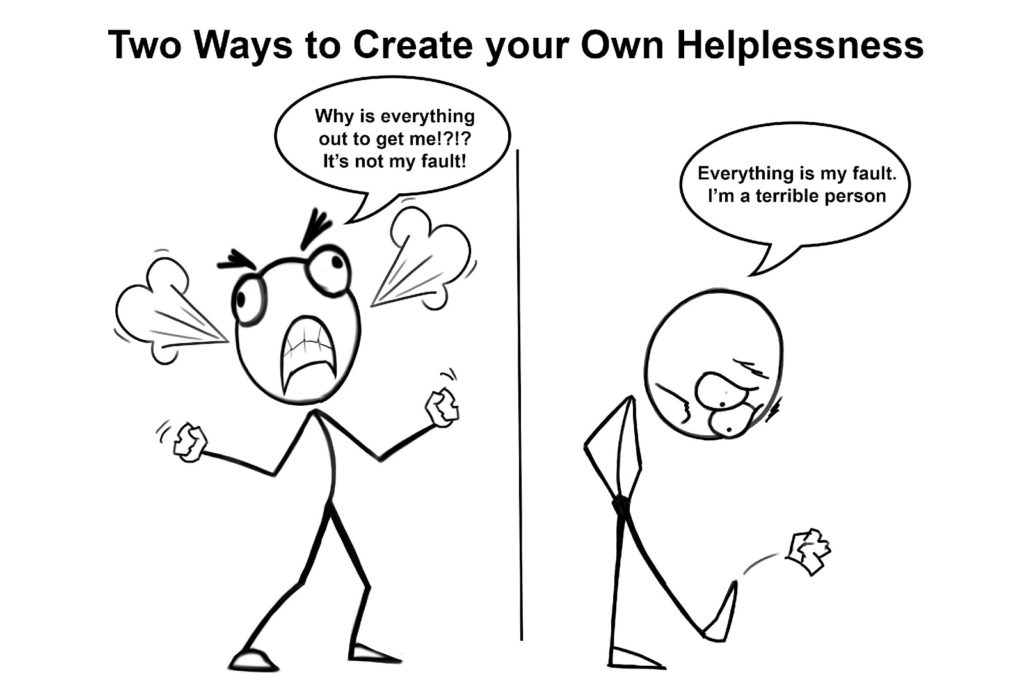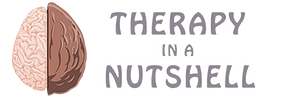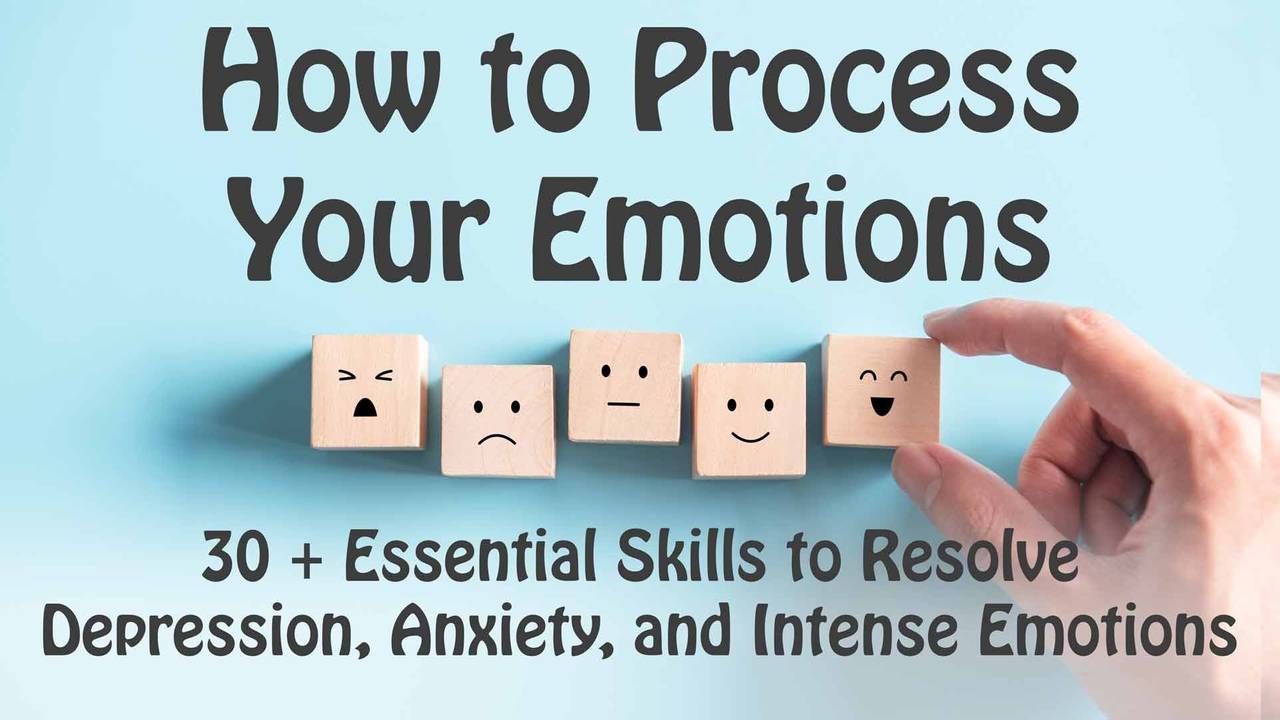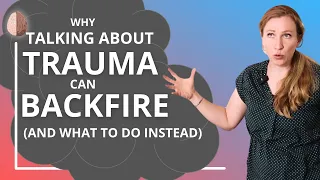How to tell if you’re creating your own suffering
The truth is that we create much of our own suffering. Why is this knowledge awesome? If we can identify something we are doing to create our own suffering then we can fix it! We can take action to resolve the problem and come to peace.
Are you Creating your Own Suffering?
“Pain is inevitable. Suffering is optional.” ― Haruki Murakami
“We create our own suffering”– Buddha
Do you know someone who always gets offended? Whose life seems to be full of drama and victimhood? Small issues get blown out of proportion, and their life is often chaotic? How about you personally, are you ever that person, are you creating your own suffering?
Sometimes I like to oversimplify. I do this because when we try to put our problems into categories, it helps us clarify what we should do to solve them. In this video you’re going to learn about two categories of pain, clean pain, and dirty pain. This is really important, because when you can tell the difference, then you’ll know what to do about it, and the vast majority of pain is the type that we cause ourselves. This means that you can resolve the vast majority of the painful feelings you have and create a life filled with peace, hope, and happiness.
Clean Pain vs. Dirty Pain
I recently heard this story about Rose Caiola at rewireme.com, she got a call from a friend who said “I need to talk to you about something”, but she wouldn’t tell Rose what it was about. So they made a plan to meet over coffee, but because of their schedules, they had to wait two weeks.
So for two whole weeks Rose worried about it. She wondered what her friend needed to talk about. She racked her brain, she wondered if she had offended her friend, or if her daughter had done something to her friend’s daughter.
Rose said “As time passed, all I thought about was what I might have done wrong. I played back every encounter we’d had over the past month to the point where I became so distraught with the idea of what I might have done that I was driving myself a little crazy. Rehearsing explanations for my phantom behavior was causing me such great distress that I finally called a mutual friend to see if I could find out what I had done. My friend assured me it had nothing to do with me. I didn’t believe her.
When the coffee date finally arrived, my friend seemed nervous. She had a hard time getting words out and apologized, saying this was very hard for her. She eventually blurted: “I’m getting a divorce.”
This was the moment that Rose’s whole perspective shifted, she had been assuming that this conversation was about her, but in that moment, all her self-created fear, her worries, her sense of guilt, all fell away and she shifted to pure compassion. Rose felt sadness with her friend.
Rose didn’t know it, but she was experiencing two types of pain here. The pain of her friends divorce, and her own self-inflicted pain brought on by anxious thinking. Let’s look at these two different categories of pain Rosa was experiencing and talk about their differences.
The Difference Between Clean Pain and Dirty Pain
I know pain is complex, but for our purposes, I’m going to place pain into two categories, and for lack of a better word, I’m going to call them clean pain and dirty pain.
- Clean Pain- The beautiful and innate emotions that come from our experiences, from being alive. These emotions can include Joy, Gratitude, Wonder, Hurt, Grief, Regret, Sadness, etc, etc…Why do we listen to sad songs or watch movies that make us cry? Or scary movies that make us jump? We like to feel alive, and live with feeling. In Rose’s story, when she felt sympathy with her friend, she hurt with her, but this is a clean, pure sadness that comes from compassion.
- Dirty Pain- This is the suffering that we create in our lives by our thoughts, choices, and actions. Often, this pain is created by how we think and how we act. We feel bitter about missed opportunities or angry about perceived slights. In Rose’s story, she created huge amounts of stress and pain when she spent 2 weeks assuming that this chat over coffee was about something she did wrong.
Signs you might be creating your own suffering:
Like Rose, we tend to spend so much of our time making ourselves suffer, and in this video, as well as throughout the rest of the course, you’re going to learn about a bunch of ways that you may be creating your own suffering, things that you’re doing that are keeping you sick, or hurting, or angry. This includes things like:
- How we see the world: Blaming others, taking offense, holding grudges, etc.
- Distorted Thinking patterns (”Everything is awful” or “Everyone’s out to get me” or taking things personally. (See Skills #18-19 on Cognitive Distortions)
- Shaming ourselves for having emotions and trying to suppress our feelings.
- Having a victim mindset.
- Self-Deception (See Skill# 23)
- Avoiding our problems.
- Comparison and competition.
- Making Bad Choices– Reacting impulsively or making choices that go against who we want to be. (Skill# 24)
- Chronic Stress Believing you’re in danger when you’re actually safe- aka. (Skills #9-12)
And there are so many more, but you get the idea.
How you Create your Own Helplessness
After learning this, does the idea that you’re potentially causing much of your own pain, whether knowingly, or unknowingly, make you feel empowered or discouraged? This is really important to check your response. For many people with depression or anxiety, they create their own helplessness in one of two ways:
They say “This isn’t fair”, “It’s my genes”, “Why is everything out to get me!”, “It’s not my fault”, or they say “Everything is my fault, I’m a terrible person”.

Check yourself. When you learn what you’re doing that makes it worse, you can then learn how to stop it. To be clear, I’m not saying it’s your fault that you experience depression or anxiety, but I am saying there’s something you can do about it.
We actually have a natural impulse to blind ourselves to our self-created suffering, relieve ourselves from responsibility for it and wallow in self vindication. We want to believe that it’s not our fault, there’s nothing we can do about it other than feel bitter.
The problem we hit up against, is that people tend to have two mental blocks that stop them from healing.
- Blaming others or outside circumstances, or
- Blaming themselves
We can’t create change in our lives when we blame outside forces for everything. This is like saying “It’s not my fault I’m depressed, it’s my parents fault”, or “I can’t help it”, or “the world is such a terrible place and everyone in it is so horrible, they make me depressed!”
Similarly, we can’t create change when we blame ourselves for everything. Saying things like “Everything is my fault, I’m a terrible person”. Thinking this way is just beating yourself up, when you label yourself as broken, you block yourself from taking small actions that actually heal your pain.
Neither of these attitudes (believing we are completely helpless, nor believing it’s all our fault) really help us take action. The reality is that we do contribute to our own pain. Our actions, thoughts and responses can greatly enlarge our suffering. Blaming others or ourselves, doesn’t help us take any action to improve our situation.
Creating Change
If we want to be able to take action to change our lives and suffer less, then we need to be able to know when our suffering is in some part caused by us, and when our pain is simply a natural and beautiful part of being alive. If we can distinguish between the two, then our choice of action becomes quite clear.
Option A: Dirty pain- I am doing something to make my pain worse. So I will work to change it.
Option B: Clean Pain- This pain is a natural result of caring. So I will continue to care.
Of course this is an oversimplification- there’s times that we don’t know if it’s our fault or not, there are circumstances where it’s 90% one way and 10% the other; what if I think it’s my fault and it really isn’t? What if I’m deceiving myself and think it isn’t my responsibility, and it really is? So there probably should be an option c.
Option C: I’m not sure if there’s something I’m doing to make this worse, so I will keep doing my best to explore and stay open to change, while moving forward in my chosen path.
I think the serenity prayer really illustrates this concept well.
Grant me the serenity to accept the things I cannot change
The courage to change the things I can
And the wisdom to know the difference.
Radical Responsibility
One of the best ways to let go of self-caused suffering, is to let go of victimhood and blame, and take responsibility. “I am 100% responsible for what I am responsible for.” This is almost a radical responsibility- We create suffering when we either resist the truth of our own responsibility, (it’s not my fault!) or when we take responsibility for things outside of our control (like others’ choices or trying to make everyone around us happy).
True accountability is letting go of trying to change the things that you’re not responsible for. Stop putting all your energy into trying to change other people, and put that energy into improving yourself.
So here’s an example of how you could apply the idea of clean pain, dirty pain.
Mike’s boss gave him a huge assignment at work, he tried to work hard on it, some days he worked really hard, other days he got overwhelmed. Some days he didn’t focus very well, and got distracted by social media. Sometimes he couldn’t move forward because other members of his team hadn’t finished their parts of the job yet. Finally the deadline came around, and the assignment wasn’t complete. Mike walks into his boss’s office with a sinking feeling. His boss throws a fit, he’s red in the face, he yells at Mike, tells him he’s a horrible worker, and that he ought to fire him. Mike is super furious, ashamed, indignant, but on the surface he submits, he nods his head, he promises to get it done as soon as possible. When the tirade is over he walks back to his office, shuts the door, and wants to cry. He thinks “He is so unfair! This is his fault, the assignment was too big! He didn’t give me enough time!” Now he feels angry, and like he’s being mistreated. He starts listing all the reasons why his boss is a terrible boss, and remembering every little thing he ever did that bugged him. He’s just fuming. Then Mike starts to get mad at his coworkers! “They’re idiots,” he thinks. “It’s their fault, not mine, if they had done their part I wouldn’t be here.” Mike’s feeling trapped, angry, helpless. He tries to work that afternoon, but eventually the day ends and he leaves work feeling shaky and tired.
At home Mike slumps on the couch. He starts to think about all his failures. “What’s the matter with me? Why can’t I get anything right!” He starts to compare himself with his brother and his coworkers, who all seem to get the work done faster. “I’m such a loser” he thinks, “I hate my job, and I’m just no good. I can’t find a better one. It’s all my fault.” Now he’s feeling discouraged, depressed, hopeless. He’s upset because now he thinks the problem is an incurable personality trait.
In this situation, Mike is creating some of his own pain, he’s making himself angry by remembering all of his boss’s faults, he’s making himself feel helpless by blaming his coworkers, and he probably makes himself feel guilty because he doesn’t work as hard as he should. Then, by using black and white thinking, (ie. “I never get anything right”) he makes himself feel hopeless. By comparing himself to others and putting himself down, Mike creates a sense of discouragement and depression. All of this would be considered “dirty pain”, pain that Mike is creating by the way he is thinking or acting, and the great thing about this is that when you learn to think or act differently, you can make the vast majority of your pain go away.
Let me give you an example of how this works:
We often get all confused about our responsibility when we say things like “Well I did it because he did____”. In order to give ourselves power to act, and power to resolve our “Dirty” emotions, we need to focus our efforts on exactly what we are in control of and let go of the rest.
When we take full responsibility for 100% of the things that we are responsible for, it empowers us to free ourselves from the pain that we are creating in our lives. It can be hard to know how to do this, especially with big, complicated problems. So doing the Locus of Control Activity on paper, can be really, really helpful with this. For Mike, this is what it might look like writing it down on paper:
I’m responsible for: The skills I learn, how hard I work, whether I communicate assertively with my boss about the scope, and timeline of the project. I’m responsible for how I choose to think about problems, where I choose to work. I can choose to have a growth mindset and learn from this experience.
I’m not responsible for: My boss’s emotions, his assumptions, his reactivity. I’m not responsible for my coworkers and how fast they work. I can’t control problems like the supply chain, but I am responsible to plan ahead and try to predict problems in the pipeline.
When Mike takes the time to clarify responsibility, he can focus on his area of control. Mike can choose to think differently about this problem instead of exaggerating his own, or others’ weaknesses, he can focus his energy on accepting what he can’t change, and changing what he can.
When Mike takes the time to write all this down, he realizes that he needs to have a conversation with his boss, he remembers the times his boss has helped him out, not just the times he’s yelled. Mike knows he needs to be assertive with his boss and tell him how much time he really needs for the project, the obstacles that he is facing, and give a realistic timeline for when the work can be done. Mike realizes that by thinking of himself as a complete failure, that is black and white thinking, is a cognitive distortion and he replaces that with a little more balanced approach, “I’ve had some successes and some failures, but I can keep learning and growing.”
When Mike creates clarity about what pain he is causing himself and what he needs to let go of, he starts to feel a sense of hope, of empowerment, and he knows what action to take. This is the skill I call “Clean Pain Vs. Dirty Pain”
The truth is that we create much of our own suffering. Why is this knowledge awesome? If we can identify something we are doing to create our own suffering then we can fix it! We can take action to resolve the problem and come to peace. When we can identify areas to change, we can turn our pain into peace. We can heal our hearts from anger, fear and depression.
This is one section of a 30 part course, How to Process Emotions. You can access the full course with added bonuses below.





